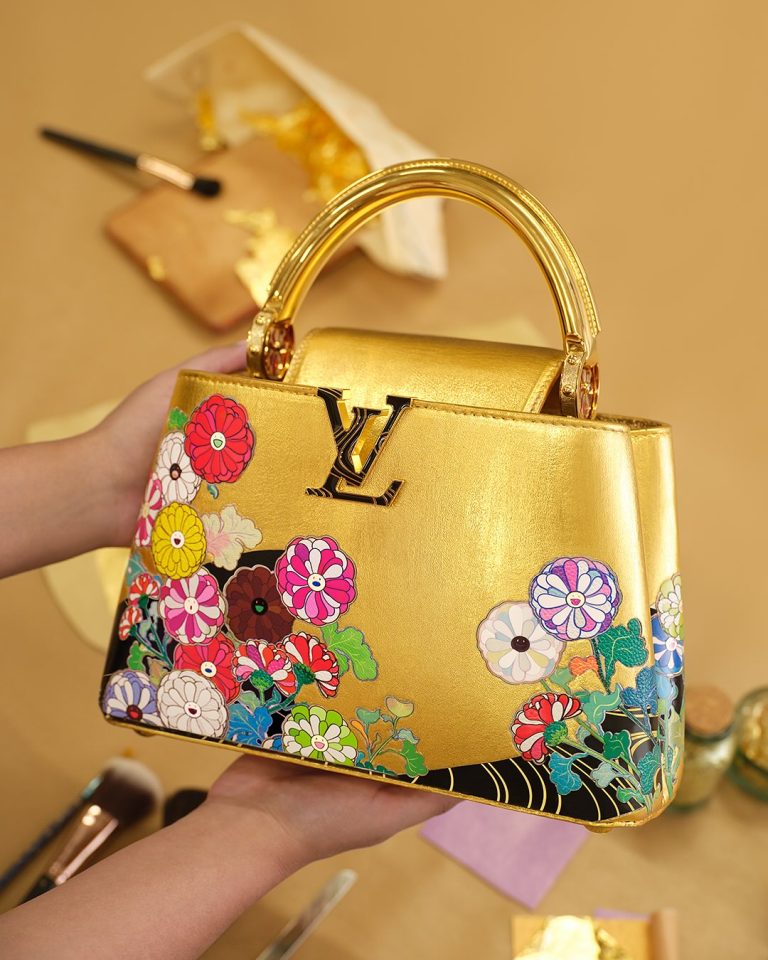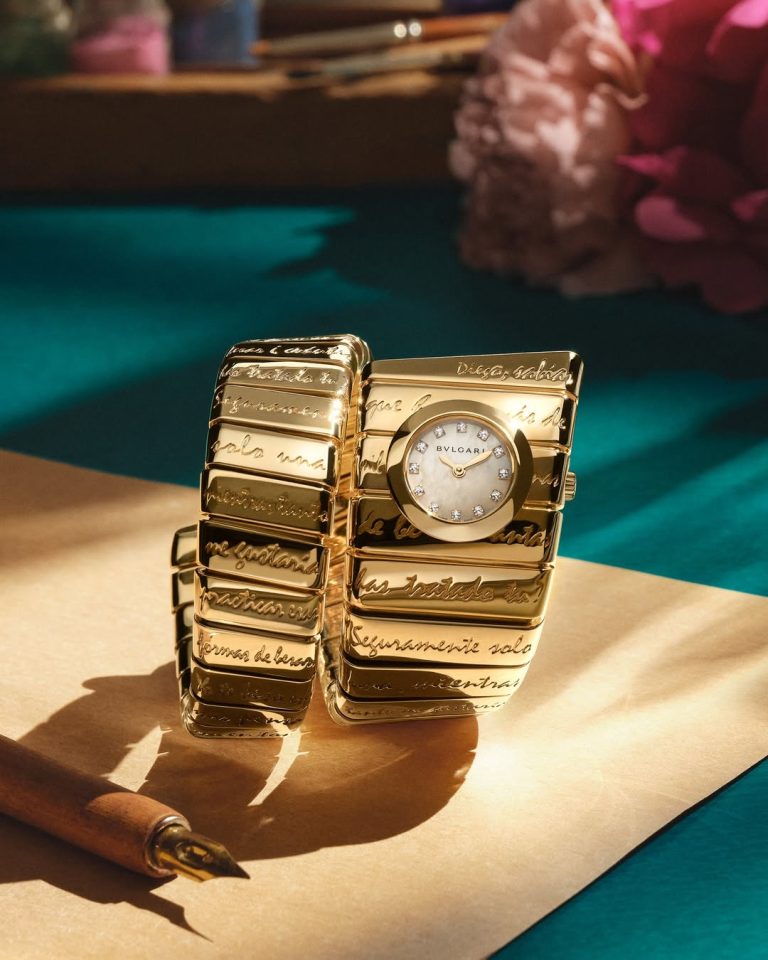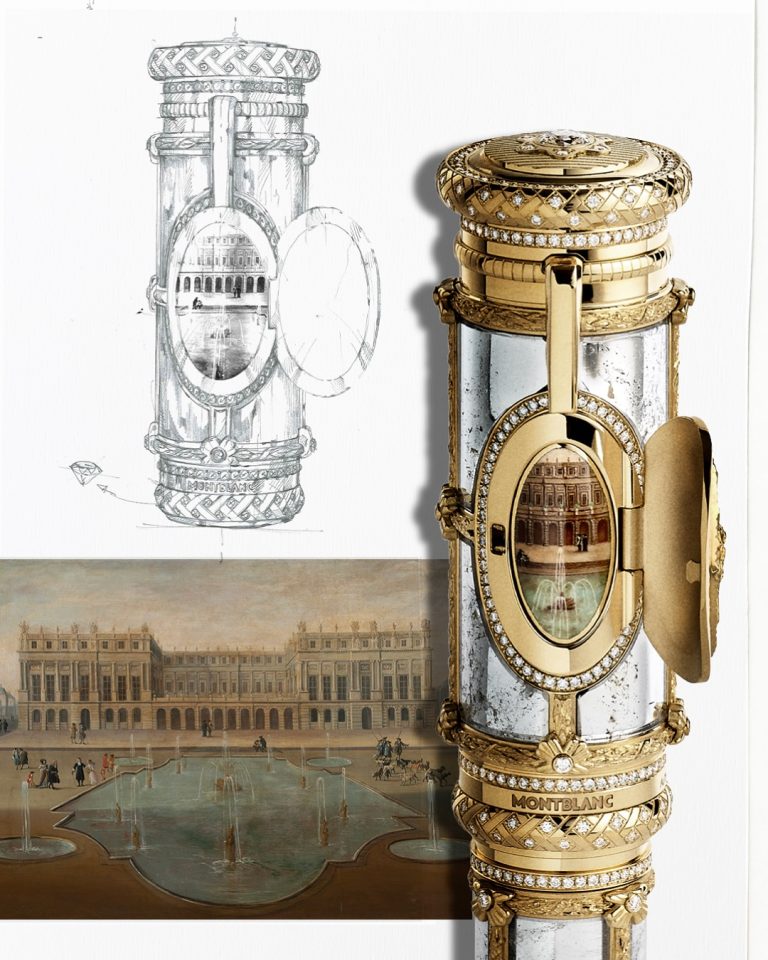There are creations that measure time, and then there are creations that question it. La Quête du Temps—“The Quest of Time”—is not simply a clock. It is a cathedral of mechanics, an ode to humanity’s timeless fascination with the infinite, and a declaration that even in an age of digital precision, emotion remains the most profound complication of all.
Unveiled by Vacheron Constantin in 2025 to mark its 270th anniversary, La Quête du Temps is the most ambitious project ever undertaken by the maison. Seven years of labor, 6,293 mechanical components, involving over twenty master artisans and watchmakers, have culminated in a creation that defies easy definition. It is sculpture, timekeeper, and philosophical statement all at once.
A Monument to Human Ingenuity
Standing over a meter tall, the clock commands not only space but reverence. Its form is a union of art and architecture—part celestial observatory, part mechanical marvel. Crafted from gold, rock crystal, steel, glass, and semi-precious stones, it reflects Vacheron Constantin’s enduring devotion to beauty as a discipline, not a byproduct.
Within its grand housing beats a network of complications and kinetic poetry: astronomical indications, perpetual calendars, and automaton scenes that animate the very spirit of time. The result is not just an instrument that tells time, but one that narrates it, translating seconds into stories and hours into hymns.
In a world of fleeting trends, La Quête du Temps stands as a reminder that craftsmanship can still be monumental; not in size alone, but in soul.
The Fusion of Art and Horology
The artisans behind La Quête du Temps come from disciplines as varied as engraving, enamel painting, gem-setting, micro-sculpture, marquetry, and watchmaking. In their hands, matter becomes metaphor. The project is a dialogue between trades, a communion of creative forces united by a single question: How does one give form to time itself?
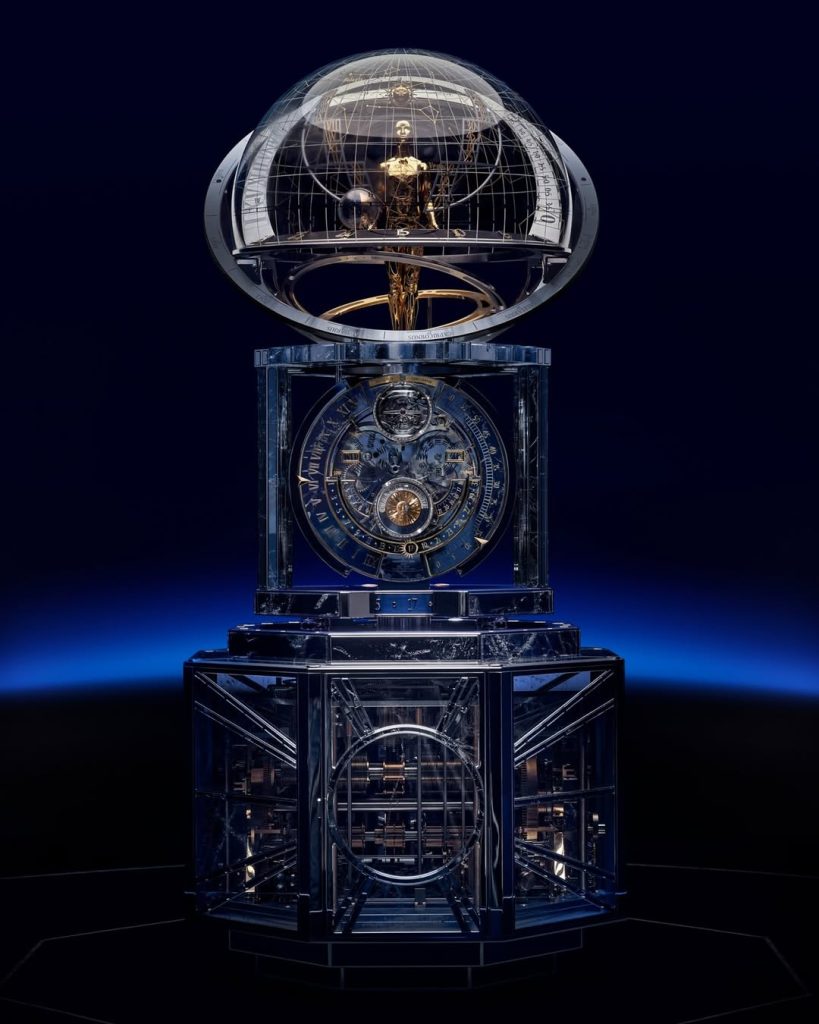
The result feels less like a machine and more like a living being that breathes through precision, dreams through motion, and thinks through rhythm. Where one might expect gears and springs, one finds instead a kind of spiritual resonance. The tick-tock is soft, almost meditative, as if echoing through a vast cathedral. It invites not admiration but contemplation.
A Clock Seven Years in the Making
It took seven years—a symbolic number, echoing the seven days of creation, the seven stages of life, the seven visible celestial bodies. The process was not merely technical but existential. Every artisan involved spoke of the project as if it were a pilgrimage—a “quest,” indeed.
To them, La Quête du Temps was more than an object to be built; it was a journey to be lived. Sketches evolved into sculptures, mechanisms into metaphors. Every enamel panel, every engraved detail tells a story of persistence, the kind that only time itself can reward.
Time as a Living Entity
Perhaps the most striking aspect of the clock is how it redefines time not as something linear but cyclical, even alive. Time here is not an adversary but a companion. Something to be observed, understood, and respected. In its intricate astronomical displays, one can trace the movement of planets and the shift of constellations. It is a cosmic calendar, an echo of eternity rendered tangible.

Looking at it, one is reminded that our measurement of time—minutes, hours, years—is merely an attempt to make sense of something infinite. And perhaps that is what makes La Quête du Temps so moving: it humbles us while exalting our capacity to create meaning within the boundless.
The Legacy of a Maison and Its Philosophy
For Vacheron Constantin, this creation is not just a commemoration of 270 years; it is a manifesto of identity. Since 1755, the maison has stood as a guardian of high watchmaking, preserving métiers d’art that many once thought obsolete.
With La Quête du Temps, it reaffirms that commitment, showing that the greatest luxury is not wealth, but patience. To dedicate nearly a decade to a single object is an act of faith in time, in beauty, in the enduring relevance of craft.
It also bridges generations: between the clockmakers of the 18th century who built astronomical masterpieces for kings, and the artisans of today who now build for the imagination itself.
A Modern Relic for a Digital Age
In an era where time can be read in the blink of an eye from a screen, a clock like this feels almost miraculous. It demands presence. You cannot scroll past it; you must stand before it. You must listen.
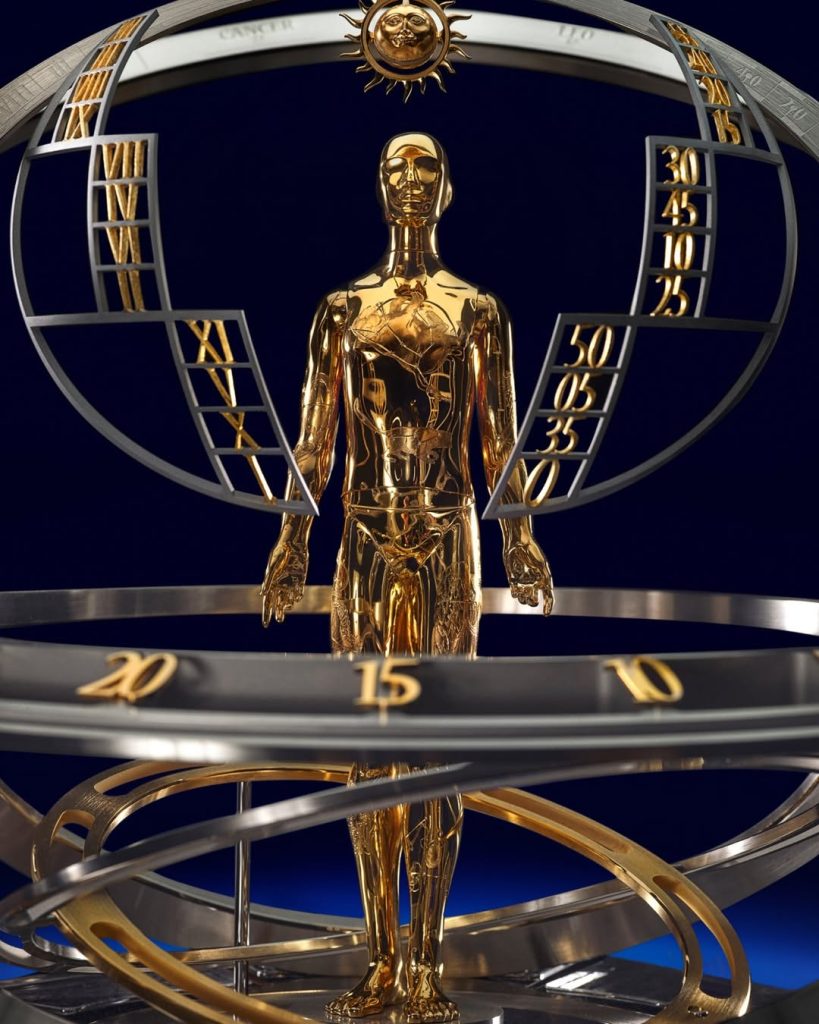
And in that stillness, something ancient stirs—the same awe that filled the hearts of those who watched the first pendulums swing or gazed at the heavens for guidance.
La Quête du Temps reminds us that technology can record time, but only art can reveal it.
Conclusion: The Human Quest Endures
Ultimately, La Quête du Temps is not about timekeeping; it’s about time itself. It is a celebration of our human yearning to understand what can never be held, to honor the fleeting by making it eternal.
It stands not as a monument to the past, but as a bridge between ages—between craftsmanship and philosophy, between matter and meaning, between the tick of a clock and the heartbeat of creation.
In the soft hum of its mechanisms lies a truth that transcends centuries: that the quest for time is, and always has been, the quest to know ourselves.
The La Quête du Temps clock is not for sale and will be exhibited at the Louvre’s “Mécaniques d’Art” exhibition from September 17th to November 12th, 2025.
Featured images: Vacheron Constantin

Sewelo is a world where jewelry, watches, and objects come alive in a shimmering dance of fantasy. Through a literary lens, we celebrate the beauty and elegance that make these treasures more than just possessions.


